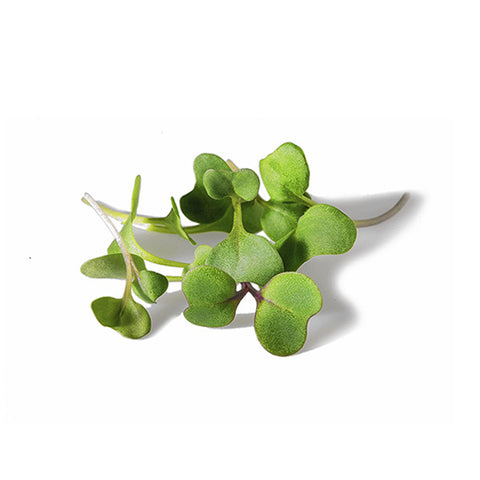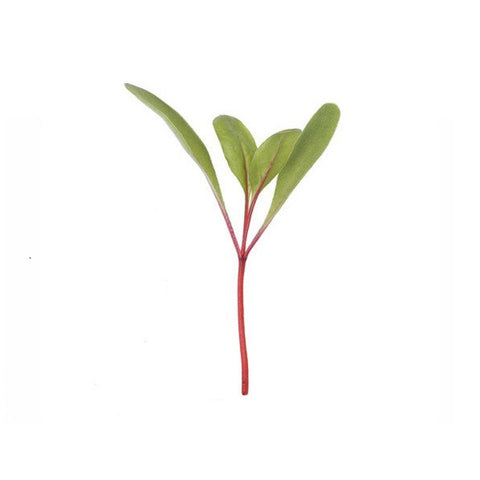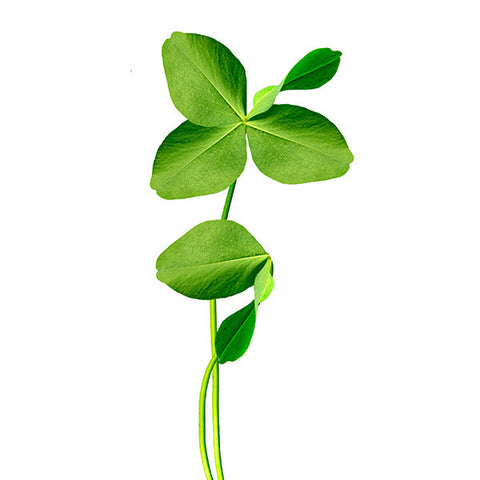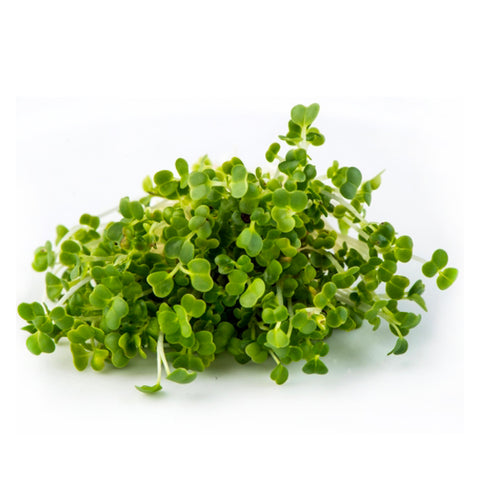If you are not aware of the differences between Microgreens and Sprouts, you are not alone. These greens are very different from each other as they are from their mature counterparts.
Before getting into the details, let’s understand what exactly Microgreens and Sprouts are:
What are Microgreens?

Microgreens, as the name suggests are baby plants. They are packed with nutrients compared to their adult counterparts. These little greens gained their popularity from cooking shows and high-end restaurants but now you can spot these on the shelves of grocery stores or even growing on people’s window sills.
Microgreens come in many varieties, the most commonly grown microgreens are beets, radish, broccoli, etc. They add an exciting twist to your dishes by giving them flavour and colour. Almost every vegetable or herb can be grown as a microgreen.
Read this article to learn more about microgreens: How to grow microgreens in India
What are Sprouts?

Sprouts are the seeds that germinate and transform into young plants. They are grown in a hydroponic system (using only water. Sprouts are a rich source of nutrients and are low in calories. People often germinate sprouts in water, it grows quickly and can be harvested in two to six days. Sprouts have been a health food staple for decades now. Sprouts were once the mainstay of raw diets, touted for their nutritional value.
Differences between Microgreens and Sprouts

Let us tell you the difference between Microgreens and Sprouts. Perhaps, you already learned about microgreens in the Indian Food Television show. But would you be able to tell the difference when it is served on your plate? Here’s how the two greens are completely different from each other:
Growing Medium
Microgreen

If you want to try your hand at gardening, growing microgreens is the best foot forward. All you need to grow microgreens is a sunny spot, microgreens seeds, container, and a spray bottle. Microgreens can be grown with or without soil, but a preferable and convenient way to grow microgreens is by using soil as a growing medium. As microgreen grows in popularity, the number of variety of microgreen seeds is also growing. Start with seeds that are easy to grow like broccoli, beets, etc.
Sprouts

Sprouting is a bit trickier than cultivating microgreens. The advantage of growing sprouts is that it germinates quickly - in the time it takes to grow one batch of microgreens, you can grow two-three rounds of sprouts. To get started, all you will need are seeds, an appropriate container, and a few days.
Growing Method
Microgreens
Microgreens are grown like regular green plants. Growing microgreens take weeks to grow, the goal here is to have baby leaves as opposed to germinated seeds. These little greens are grown in soil, watered and placed under light (artificial or natural). These little greens when exposed to light turn green. They aren’t harvested until their true leaves appear, typically about 2-4 inches high. Microgreens require more ventilation and sunlight that makes the chances of bacterial growth less.
Sprouts
Sprouts are grown when the seed sprint into growth. You don’t have to feed them with extra nutrients or pot them in the soil to grow. The plants use the energy stored in the seed to germinate and prepare to be eaten. Sprouts need intense humidity and indirect sunlight to thrive. It can become a breeding ground for bacteria. You have to keep rinsing the sports thoroughly to avoid bacterial growth.
Time to harvest
Microgreens

Harvesting microgreens is as simple as ABC. Once the seedlings have grown into the baby greens, you can gently harvest the leaves by grasping them with one hand and trimming the stems just above the soil level. In the case of sprouts, we eat the seed with the shoot and in case of microgreens, we only eat the shoot stem and leaves. Hence the chances of seed-borne contamination/diseases can be avoided. It takes 1-2 weeks for the microgreens to get ready to be harvested.
Sprouts

Once your sprouts start to germinate, place them in a bright spot with indirect sunlight, and allow the leaves to green up. It takes 4-6 days to get the sprouts ready for harvesting. Rinse them thoroughly with water, dry, and drain them as much as possible using paper towels when your sprouts are ready to land into your dishes.
Uses & Nutritional Value
Microgreens

Microgreens are very versatile in nature. You can simply toss them into a taco or swirl into a smoothie. You can garnish your salads or soups with it. The only thing you should not do with microgreens is to cook them, cooking can reduce the content of potent nutrients and vitamins.
Microgreens are packed with a massive amount of nutrients for their size. The type of nutrients you will get out of them depends on the kind of microgreens you consume. It is said that a typical microgreen contains a lot more nutrients than its mature self.
Sprouts

Sprouts are generally used to add life to sandwiches and garnish salads. Some varieties of sprouts are sauteed and used in dishes. In short, sprouts are added to many dishes as topping to give them a final touch. They don’t really have a flavour of their own like microgreens.
Sprouts are full of protein and fibre. The nutrients you get are dependent on the sprouts you eat. The only nutrients stored in the sprouts are the ones that are already present in the seeds.
Storing
Microgreens

The best method to store these little greens is a glass of water as if they were like freshly plucked flowers. Store them in a cool place like this and they will stay fresh and last for a couple of days. You can also store these greens in a moist paper towel. It is best to consume these greens within three days of harvesting.
Sprouts

Sprouts stay well when they are dried properly, the less moisture they have clung to them the better. You can also store your sprouts in a bowl tightly sealed with a plastic wrap and a few holes poked in the wrap. Even in the best condition, sprouts stay well for a week.
| Microgreens | Sprouts |
|---|---|
| You can only eat the stem and the leaves of the plant | You can consume the entire plant |
| Microgreens come in a variety | There are limited varieties of a sprout |
| A higher level of nutrient and fiber | A lower lever of nutrient and fiber |
| Need good ventilation and sunlight to thrive | No direct sunlight or ventilation required to thrive |
| Harvested within 1-2 weeks of plantation | Harvested within 2-3 days |


 Sign In
Sign In

















Let us know your feedback
* Comments must be approved before being displayed.